GL Announces DDS Protocol Analysis Software
15th, Jan 2018
Welcome to another January 2018 issue of GL's Newsletter providing information and insight into our latest Protocol Analyzer for Digital Data Service (DDS).
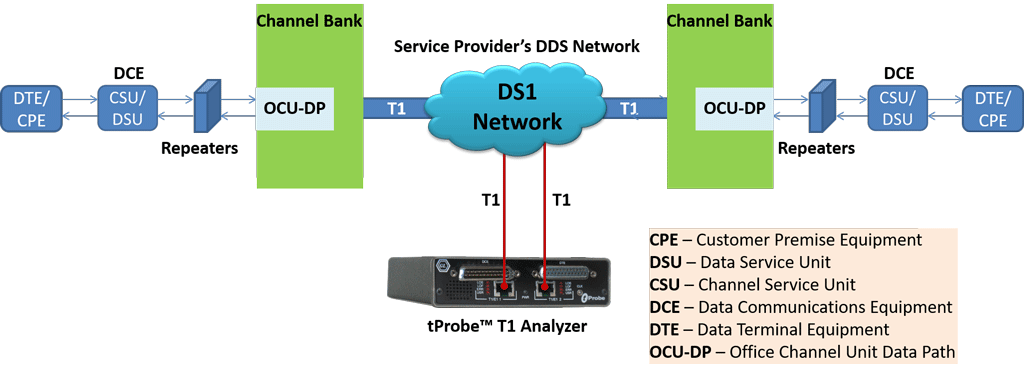
Overview
In late 1970’s to late 1980’s ATT offered a pure private line digital data service called Dataphone Digital Service, or DDS. The system supported standard rates of 2.4, 4.8, 9.6, and 19.2 kbps, with higher rates such as 56 kbps, and n x 56 kbps also possible but rarely. These circuits although legacy, are still quite common TODAY - because they work! Circuit design is as shown above. Specialized channel cards called OCU-DP (Office Channel Unit Data Port) are connected to standard CSU/DSUs with datacomm interfaces as shown in the above diagram. Both synchronous and asynchronous data is formatted and fit cleanly into a 64 kbps timeslot (by repeating the data bits or bytes). The bit repetition had the added advantage of providing error correction and thus better performance. The channel data is then inserted into timeslots of a standard T1. In this manner many data circuits can be packed into a private line T1.
Normal testing methods used to verify DDS circuits are -
- BERT Testing at DS0 level with standard set of pseudorandom and fixed patterns
- Subrate testing at 2.4, 4.8, 9.6,19.2, and up to 64 kbps
- Loopback or end-to-end tests to isolate faulty DDS circuits
- Non-Intrusive monitoring and analysis of frames at certain points within the network infrastructure or at customer premises
Non-Intrusive Capture and Analysis
GL supports non-intrusive monitoring and analysis of DDS frames using T1 Analyzer hardware. The captured data can be decoded and analyzed by GL’s DDS Protocol Analyzer (Item No: XX102).
Non-intrusive TAPs are used to passively duplicate the signal between two end points on a network link without disturbing the actual network activity. Any of GL’s T1 Analyzer hardware shown below under the section supported platforms can be used with RJ48 Y Bridge - splits one RJ48 into two complete- to non-intrusively tap and capture the DDS frames on a T1 line.
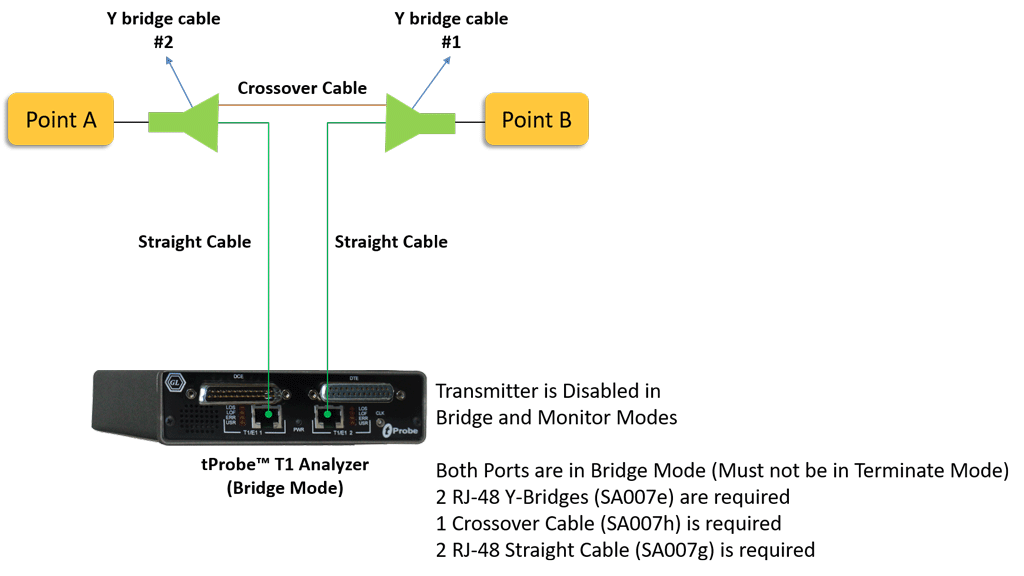
The DDS data is formatted into frames separated by one or more bytes. The data channel may utilize multiple, all or a fractional timeslot of the T1 line. Also, there may be multiple data channels within the T1 line. The captured data analyzed using GL's DDS Protocol Analyzer application is as shown in the screenshot below.
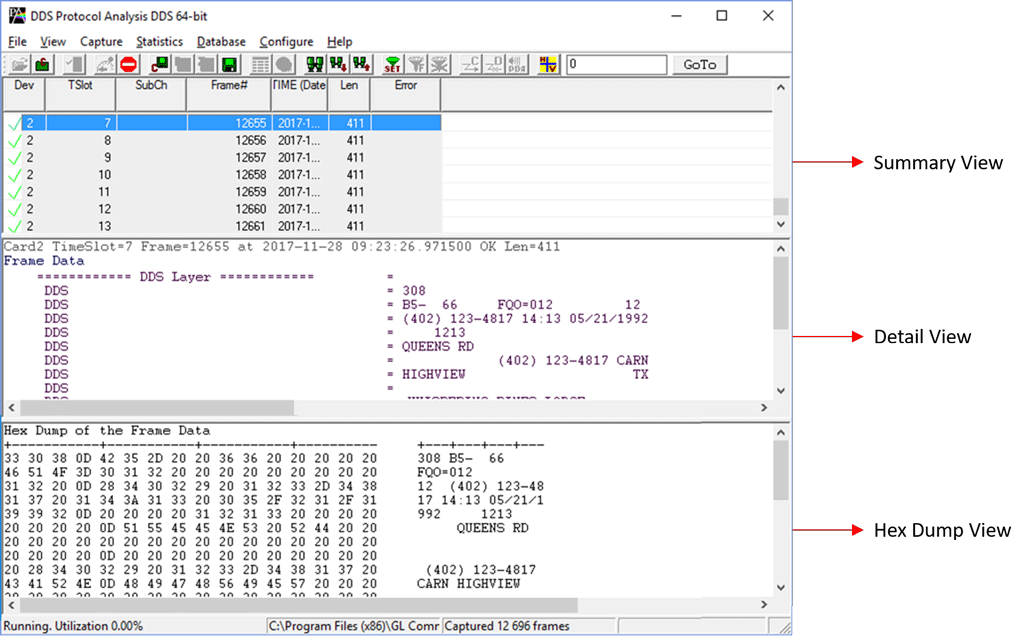
A typical capture and decode of DDS from of 9.6 kbps is shown in the figure below. In this format, DDS OCUs regenerate customer data bytes 5 times for 9.6 kbps. This regeneration may be 10 times for 4.8 kbps, and 20 times for 2.4 kbps, depending on the customer requirements. The remaining bits are stuffed to get to create a 64 kbps DS0 signal.
From the incoming data, DDS analyser considers only the first data byte value and ignores the next set of data bytes with same value. The analyzer then strips out the LSB and MSB bits from each byte value, and the remaining bits are grouped to detect the proper data bytes by flagging the start and stop bits.
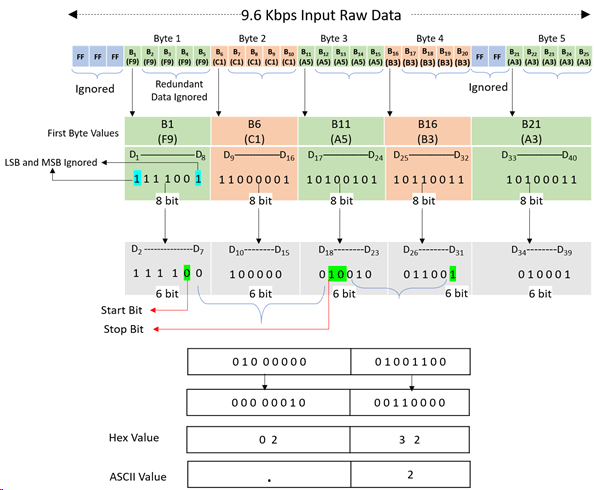
Important Features
| Display Features |
|
|---|---|
| Capturing Streams |
|
| Export Options |
|
| Additional Features |
|
Supported Platforms
GL Communications supports the following types of Real-time DDS Analyzers on any of the following T1 Platforms:
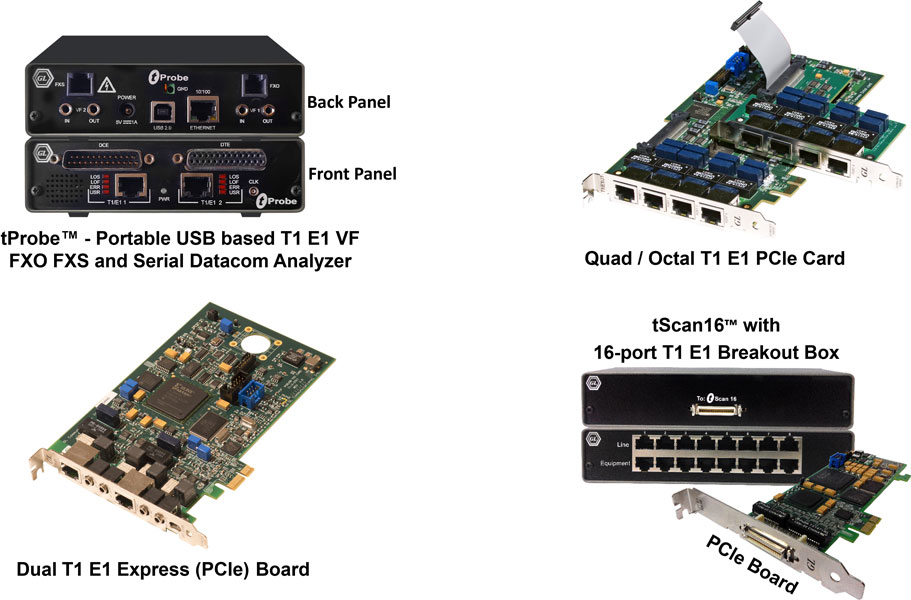
T1 Hardware Platforms for DDS Analysis
 Back to Newsletter Index Page
Back to Newsletter Index Page